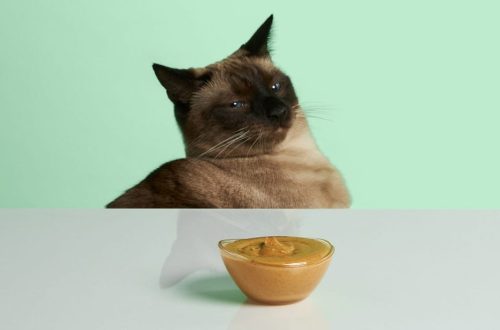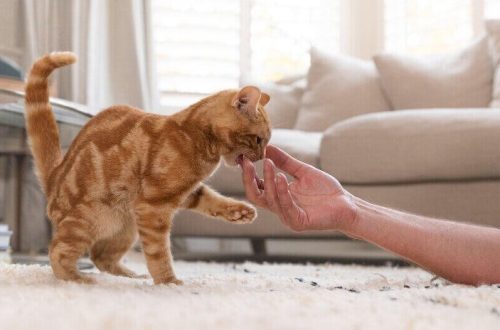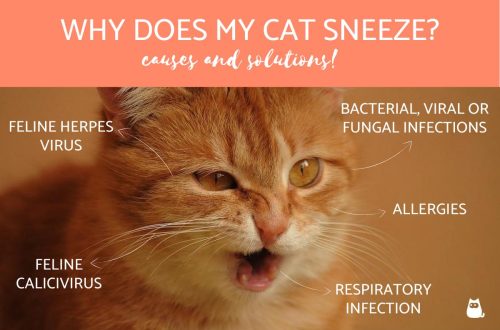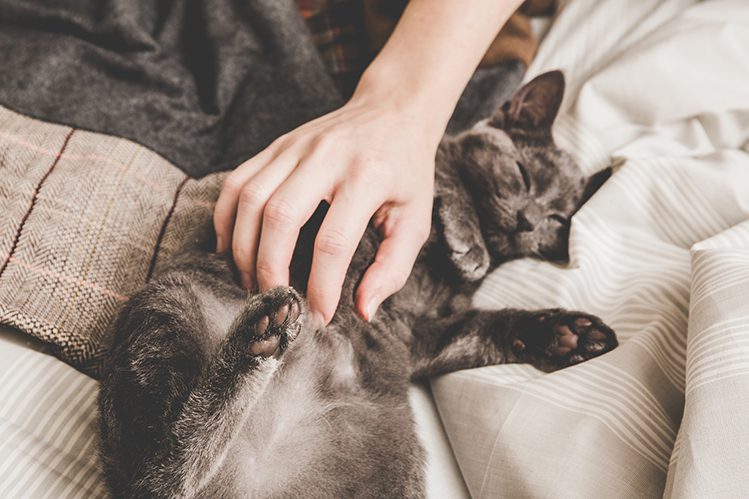
Why do cats purr and what does it mean?
Why do you think your cat purrs? Shows his love? Asking for a favorite treat? Attracts attention? Yes, but that’s not the only reason.
What does your cat’s purr mean? Do all cats purr and why can a cat suddenly stop purring? You will find out the answers to these questions from our article.
Cats have conquered the whole world. And gentle purring definitely helped them in this! Did you know that purring is not only pleasant music for our ears, but also health benefits?
Numerous studies by American scientists (*researchers Robert Eklund, Gustav Peters, Elizabeth Duty from the University of London, animal communication specialist Elizabeth von Muggenthaler from North Carolina and others) have shown that the purring sounds and vibrations of the cat’s body have a positive effect on human health. They soothe, even out breathing and heart rate, eliminate stress and insomnia, and even strengthen bones! No wonder cats are the stars of pet therapy.
Have you ever wondered where the organ responsible for purring is located in a cat? What processes occur in the body so that we hear the cherished “murrr”? How do cats do it anyway?
The process of purring originates in the brain: electrical impulses arise in the cerebral cortex. Then they are “transferred” to the vocal cords and cause them to contract. The vocal cords move, alternately narrowing and expanding the glottis. And then the fun part. The cat has a special organ for purring – these are the hyoid bones. When the vocal cords contract, these bones begin to vibrate – and that’s when you and I hear the coveted “urrrr.” Usually the “mur” falls on the exhalation of a cat, and her body vibrates pleasantly to the beat.

Think only house cats can purr? In fact, this is the talent of many representatives of the cat family, and with them some viverrids.
Yes, wild cats purr in their natural habitat, just like your Scottish Fold. But the frequency, duration and amplitude of their purring differ markedly. Thus, the frequency of a cheetah’s purr is approximately 20-140 Hz, and a domestic cat is in the range from 25 to 50 (*according to Elisabeth von Muggenthaler, a bioacoustic specialist from the Institute of Fauna Communication in North Carolina.).
Talented “purrers” in the wild are, for example, lynxes and forest cats, and from viverrids – ordinary and tiger genets (viverrids). They would definitely compete with your purr!
It is generally accepted that a cat purrs when it feels good. So she feasted on her favorite sausage with tuna and settled down on the warm knees of the hostess – how to stay here?
Indeed, the pet purrs when it is full, warm and calm. He may thank you with a gentle purr when you talk to him affectionately. When you scratch his ear. When you go to the refrigerator to get canned food. When you give a super soft fleecy couch. In a word, when you create comfortable, safe conditions and show your love. But these are far from all the reasons.
It turns out that a cat can purr not only when she is well, but also when she is very unwell.
Many cats begin to purr during childbirth or when they are sick. Others “turn on” the purr when they are stressed, afraid or angry. For example, a cat may suddenly purr while sitting in a carrier on a rumbling bus. She doesn’t like this trip. She is most likely afraid.
There is a theory that purring stimulates the production of a hormone that reduces pain and calms the cat. That is, if the cat is unwell, it begins to purr to heal or calm itself. Researchers at the University of California believe that purring (or rather, body vibration) also tone the musculoskeletal system. After all, cats are inveterate dormouse, they spend a lot of time without movement. It turns out that purring is also a kind of passive fitness.
And purring is a way of communication. By purring, cats communicate with humans and with each other. The nursing mother begins to purr so that the kittens react and crawl up to drink milk. During feeding, she continues to purr to calm her babies. Kittens purr to tell their mother: “We’re full.” Adult cats purr to invite their brethren to play. But the most amazing thing is that a healthy cat can start to purr when it sees another cat that is in pain. Empathy is not alien to them.
Researchers still haven’t figured out all the reasons why felines purr. However, it is known that each pet has several variants of purring, and each of these variants has its own purpose. Your cat knows exactly how to purr for you to give her a treat. And she purrs in a completely different way when she is just bored or when she communicates with another cat. These are such charming animals with their “superpower”.
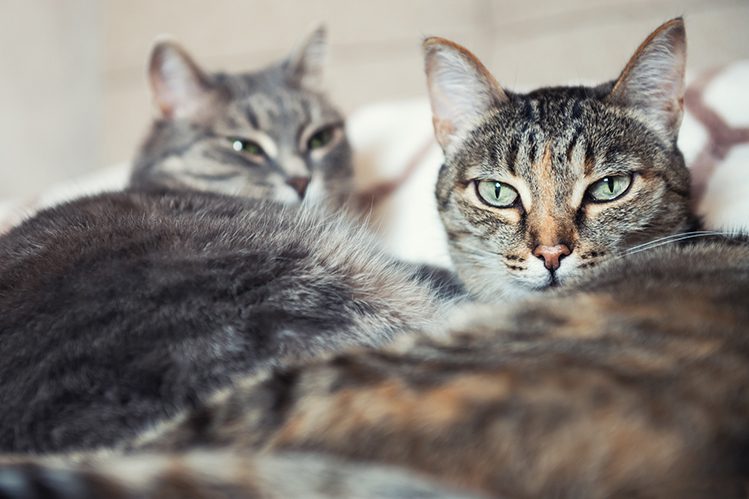
Cat owners often ask why a cat purrs and stomps at the same time. For example, a pillow, a blanket or the owner’s knees? The answer is pleasant: at these moments your cat is very good.
For cats, this behavior is a reference to deep childhood. When kittens drink their mother’s milk, they purr and massage their mother’s belly with their paws (“milk step”) to increase the flow of milk. For many, this scenario is not forgotten in adulthood. Of course, the cat no longer asks for milk. But when she feels good, satisfying, warm and safe, the childish pattern of behavior makes itself felt.
If your cat often purrs and rumples you with its paws, congratulations: you are a great owner!
And that happens too. The owners say that their cat does not know how to purr at all, or at first it purred, and then stopped.
The first one is simple. Do you remember that every cat has its own purr? Some pets purr like tractors for the whole house, while others do it silently. Sometimes you can understand that a cat is purring only by a slight vibration of the chest or abdomen – you can feel it by placing your palm on the cat. It turns out that you don’t hear “murrr”, and the cat purrs very much.
Each cat has its own purr, this is an individual congenital feature. Some purr loudly, others almost inaudibly. This is fine.
It’s another matter if at first the cat purred, and then suddenly stopped and didn’t purr at all for a long time. Most likely it’s stress. Perhaps the cat no longer feels safe. She may have lost confidence in you or is jealous of another pet or child. Sometimes this behavior can become a symptom of malaise.
Your correct action in this case is to contact a veterinarian to rule out health problems, and consult with a zoopsychologist. Animal psychologist can point you to points of content that you hadn’t thought about before, but that turned out to be important, and help to establish the owner-pet connection.
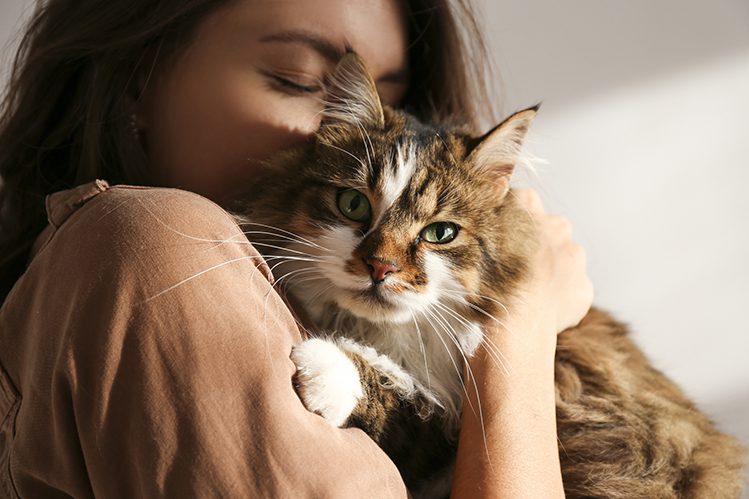
If your cat is healthy and doing well, you can “help” her purr by introducing new toys and treats into your interactions. These are trouble-free means both in establishing contact and relieving stress, and in education. Play with the cat more often in a calm atmosphere, demonstrate your involvement, your attention, and for success (or just like that) treat healthy treats from the palm of your hand.
Don’t expect a quick response. Your task is not to achieve a purr as soon as you played teaser with the cat and treated her to sausage. No. You have to show her that you are a team. That you can be trusted. That you love her and care for her. That she is safe at home.
And then, one fine day (most likely, suddenly and unexpectedly), your cat will jump on your knees, curl up in a ball and bring down on you the most melodic and velvety “murrr” that she is only capable of. Enjoy, you deserve it!



